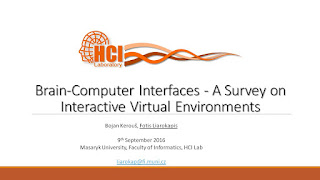A patient that suffers from a
hereditary eye condition known as Retinitis Pigmentosa makes him debilitatingly
near-sighted and requires him to use a blind cane at night or in dark spaces.
His afflictions also include diplopia, which causes nearly constant double
vision. The unique technical design of a VR headset was having something of a
counteractive effect to the patient’s Pigmentosa. These contraptions may be
designed to provide the illusion of depth through special lenses, but in
physical reality the screens they are employing are mere centimeters away from
a user’s face. Coupled with the dual-screen projection method of the HTC Vive ended
up being the perfect storm of factors to judo-flip the patient’s typical visual
impairments and render his vision closer to normal than he had experienced in
decades.
While the patient’s mind is still
adjusting to the miracle that is unfolding, the demo operator lazily presses a
button and triggers the next phase of the experience. Balloons of various sizes
and colors begin to rise and swarm around the patient. For those that were not
experiencing a life-altering event this may have been little more than a
charming surprise. But for a man who had trouble telling if the sky was clear
or cloudy, the sudden appearance of crystal clear colors was enough for him to
leap straight in the air with a start. This experience was over three months
ago now but according to Soar it was the culmination of a long-held ambition. For
the patient, VR represented something of a final hope that some of form of
modern electronics would be accessible with his condition.
More information:






